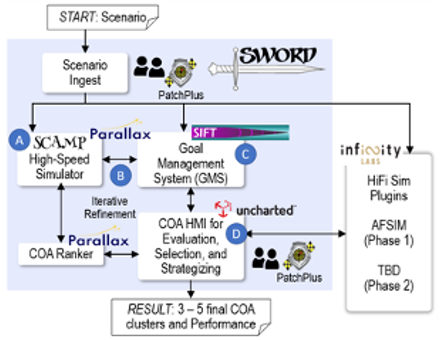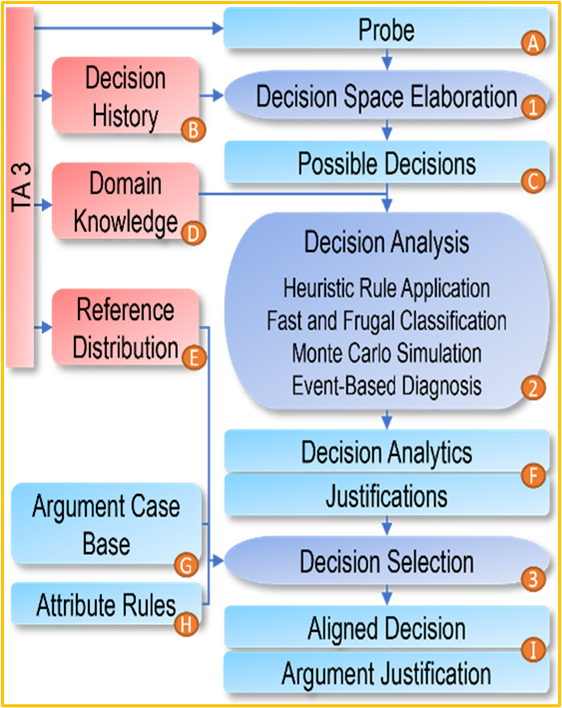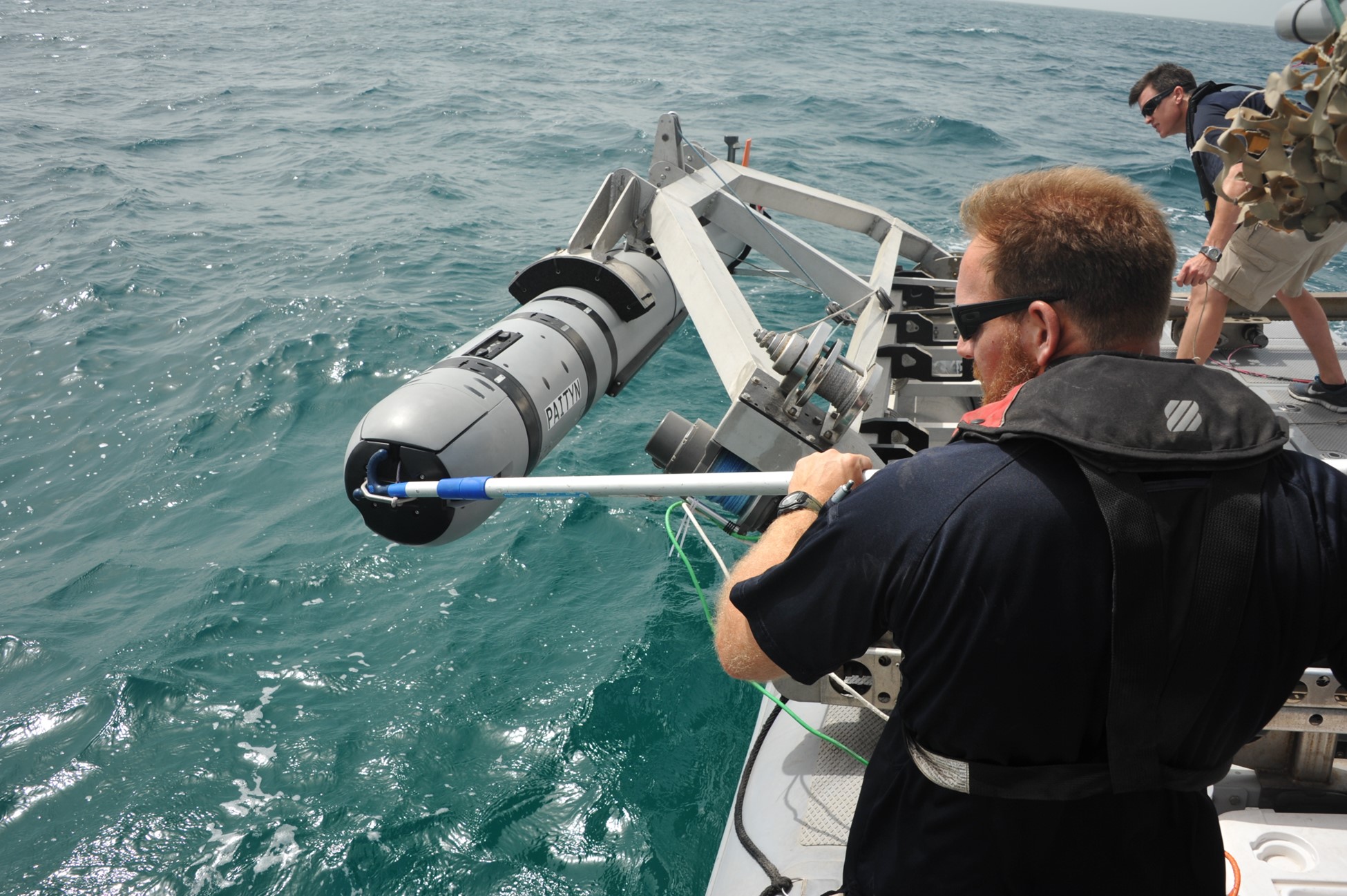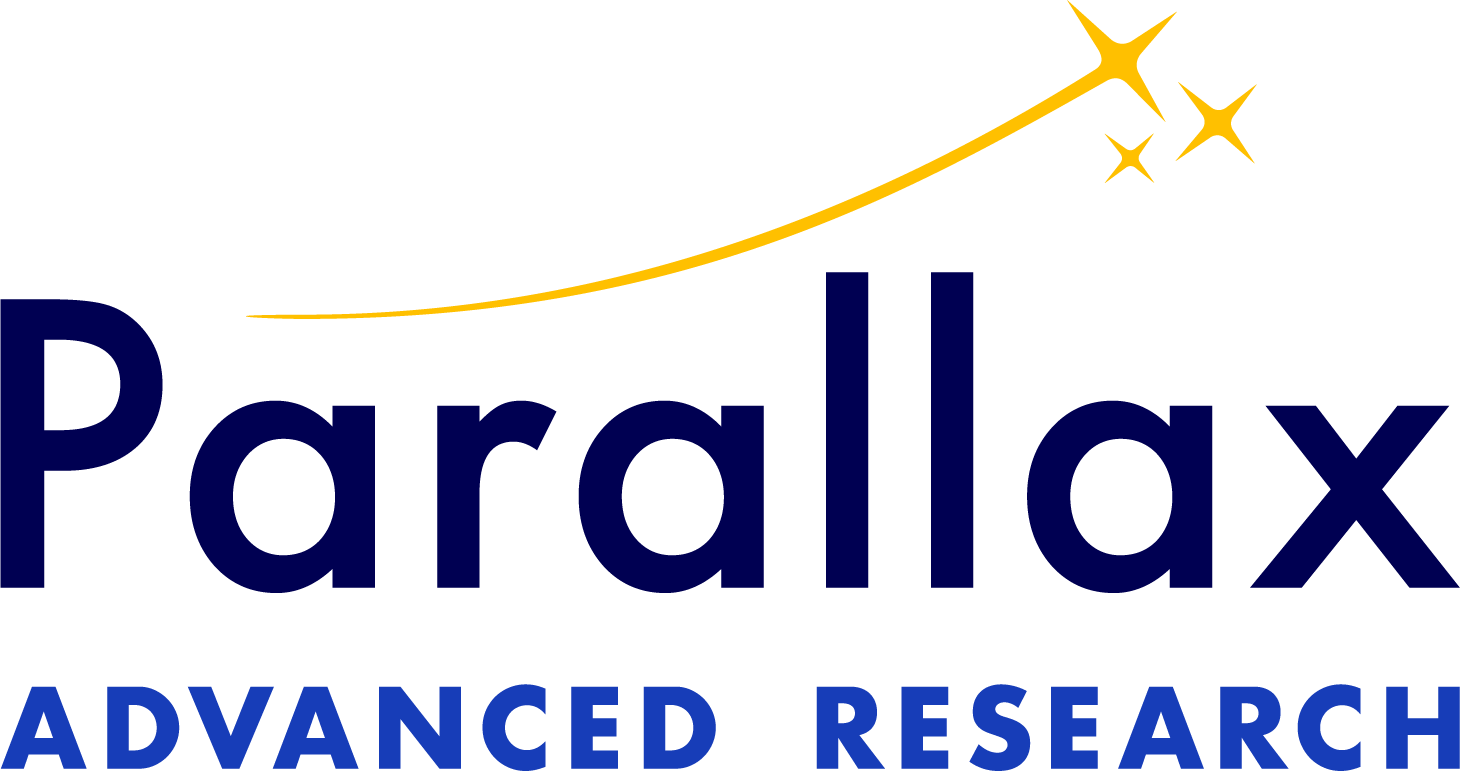The Autonomy and Operations team at Parallax delivers cutting-edge solutions in autonomous systems, providing clients with enhanced capabilities across three key areas:
- Combat Modeling and Simulation
- Triage and Decision Making
- Unmanned Systems Goal Reasoning
Our innovations support complex operational environments, ranging from strategic planning and real-time decision-making to autonomous systems with adaptive goal reasoning capabilities.


Core Technologies and Techniques
Our team applies state-of-the-art approaches and technologies to create advanced autonomous capabilities for multi-domain applications. Key methods include:
- Combat modeling and cognitive simulation
- Human-aligned AI decision-making systems
- Goal reasoning and adaptive frameworks for autonomous systems
Application Domains
Combat Modeling and Simulation
Parallax’s combat modeling and simulation capabilities are driven by our work with the Strategic Chaos Engine for Planning, Tactics, Experimentation, and Resiliency (SCEPTER), a DARPA-funded research program. At its core is the Social Causality with Agents using Multiple Perspectives (SCAMP) simulator, which enables machine-generated strategies that compete with human planning, rapidly addressing complex combat scenarios. This capability is being actively explored for applications in grey-zone warfare, Trans-National Organized Crime, and Counter-Trafficking operations across the Army, Air Force, Navy, and Special Operations.
Triage and Decision Making
Parallax's triage and decision-making innovations include the DARPA-backed In the Moment (ITM) program, which focuses on developing the Trustworthy Algorithmic Delegate (TAD), an AI-driven decision-making tool for small-unit triage in austere and mass casualty environments. By employing Explainable Case-Based Reasoning (ECBR), TAD ensures human-aligned AI decision-making, fostering trust and reliability even in high-stakes scenarios. TAD’s alignment with expert decision-making provides medical support in challenging conditions when human expertise may be unavailable.
Unmanned Systems Goal Reasoning
In partnership with the Carnegie Mellon University Robotics Laboratory, Parallax’s unmanned systems goal reasoning initiatives advance mobile robotic capabilities. Designed for high-operational uncertainty, these systems identify and respond to unknown factors in situ. Parallax is also pursuing further developments with the Navy to deploy goal reasoning technology in long-duration underwater missions. These efforts enable unmanned underwater vehicles (UUVs) to autonomously detect and neutralize underwater mines during extended, communication-free operations.
Vigilant Spirit Control Station®
Designed and maintained by Parallax, the Vigilant Spirit Control Station® is a force-multiplier in human-machine teaming for uncrewed systems. With an extensible, non-proprietary architecture, Vigilant Spirit offers flexible automation levels, advanced simulation and training components, and cross-platform functionality across vehicle classes (Groups 1-5), supporting diverse mission requirements.
Caption: Vigilant Spirit Control Station Interface or System Architecture Diagram


Development and Deployment
Our autonomy and operations programs leverage agile, scalable development and deployment practices that ensure flexibility and speed:
- Scaled Agile Framework (SAFe 5.1)
- SCRUM principles and issue tracking
- Continuous integration/continuous deployment (CI/CD)
- Cloud-enabled and docked solutions optimized for rapid deployment

Technical Lead

Advanced Systems Program Manager
Scott McAffry
Technical Lead

Director, AI & Autonomy
